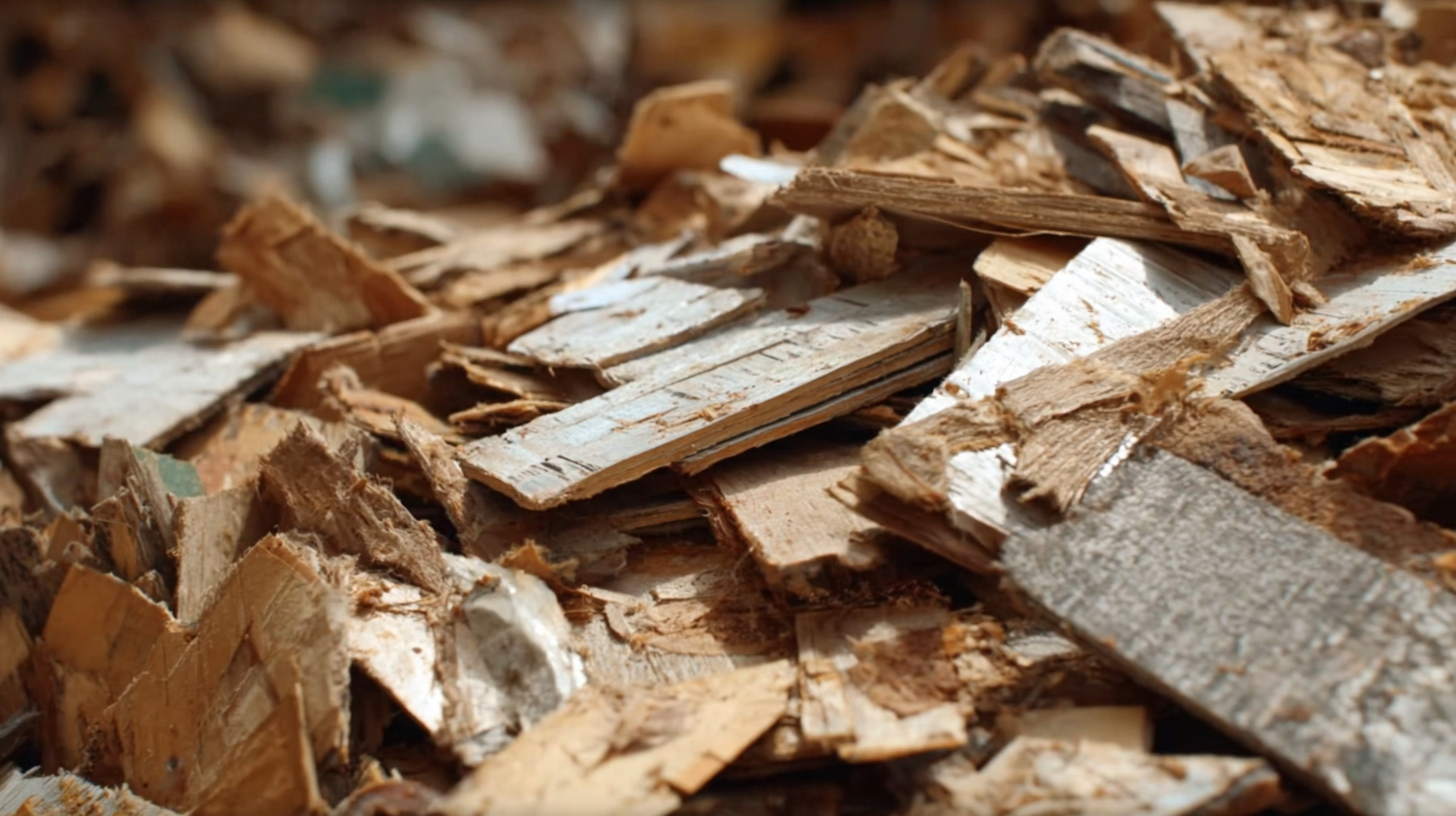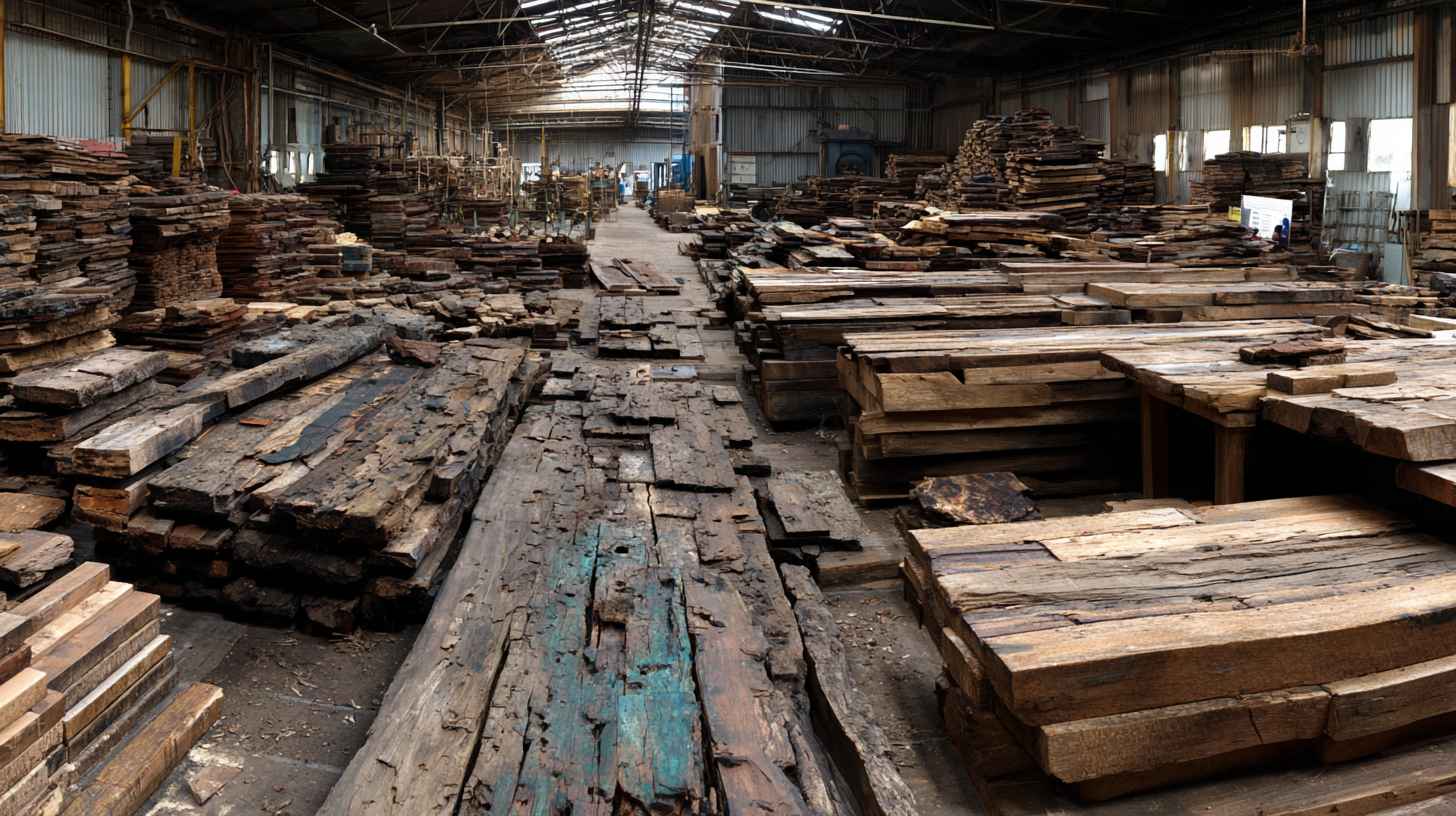Transforming the Past: The Environmental Impact of Recycled Wood in Sustainable Living
As society increasingly gravitates toward sustainable living practices, the importance of recycled wood as an eco-friendly resource cannot be overstated. According to a report by the U.S. Environmental Protection Agency (EPA), recycling wood not only conserves natural resources, but also reduces landfill waste and greenhouse gas emissions by diverting approximately 6.5 million tons of wood from landfills annually. This data underscores the vital role that recycled wood plays in enhancing environmental sustainability and tackling the ongoing challenges of deforestation and waste management.

Industry expert Dr. Emily Thompson, a leading figure in sustainable materials research, emphasizes this point by stating, "Utilizing recycled wood not only prolongs the life of valuable timber but also significantly lowers the carbon footprint associated with producing new materials." Her insights highlight the transformative potential of recycled wood in building a sustainable future.
As we explore the myriad benefits and applications of recycled wood, it becomes evident that this resource is pivotal in reshaping how we think about construction, furniture design, and ecological stewardship. Through innovative practices and broader adoption, recycled wood can indeed lead us toward a more sustainable lifestyle while preserving the environment for future generations.
Identifying Quality Recycled Wood for Sustainable Projects
Identifying quality recycled wood is crucial for sustainable projects, especially in the construction and design industries. With the construction sector generating over 40% of global waste and wood making up a significant portion, the shift towards recycled materials is essential for minimizing environmental impact. It not only helps in reducing landfill contributions but also promotes a circular economy. Sustainable architecture increasingly relies on wood as a primary material due to its versatility, aesthetic appeal, and ecological benefits.
**Tips:** When selecting recycled wood, ensure it is certified to verify its quality and sustainability. Look for products with a clear history of maintenance and treatment to avoid any harmful chemicals. Opting for local sources can also minimize transportation emissions and support local economies.
Moreover, as demand for sustainable materials grows, so does the wood recycling market, projected to reach $30 billion by 2032. This trend reflects not only consumer preferences but also tightening environmental regulations. Incorporating recycled wood into projects can elevate their sustainability profile, making it a smart choice for eco-conscious builders and designers.
**Tips:** Research the recycling practices of suppliers and verify the percentage of reclaimed material in their wood products. Engaging with manufacturers who adopt environmentally sound practices can ensure that your projects are contributing positively to the environment.
Transforming the Past: The Environmental Impact of Recycled Wood in Sustainable Living - Identifying Quality Recycled Wood for Sustainable Projects
| Type of Recycled Wood | Source | Environmental Benefits | Common Uses | Durability Rating |
|---|---|---|---|---|
| Reclaimed Barn Wood | Old barns and farm structures | Reduces deforestation, repurposes old materials | Furniture, flooring, accent walls | High |
| Recycled Pallet Wood | Shipping industry | Helps reduce landfill waste | Garden furniture, DIY projects | Medium |
| Reclaimed Wood from Demolitions | Residential and commercial buildings | Minimizes construction waste | Cabinets, doors, beams | Very High |
| Recycled Composite Wood | Industrial byproducts | Reduces reliance on virgin wood | Decking, furniture | High |
| Cedar and Redwood Salvage | Old outdoor structures | Natural pest resistance, long life | Siding, decking, outdoor furniture | Very High |
Techniques for Preparing Recycled Wood for Use in Eco-Friendly Designs
 Recycled wood has become a cornerstone of sustainable living, offering an eco-friendly alternative to new timber. To maximize its potential, various techniques are employed to prepare recycled wood for use in contemporary designs. One of the primary methods involves thorough cleaning to remove contaminants, such as paint, nails, and finishes. This process not only enhances the aesthetic appeal of the wood but also ensures safety and longevity in its application.
Recycled wood has become a cornerstone of sustainable living, offering an eco-friendly alternative to new timber. To maximize its potential, various techniques are employed to prepare recycled wood for use in contemporary designs. One of the primary methods involves thorough cleaning to remove contaminants, such as paint, nails, and finishes. This process not only enhances the aesthetic appeal of the wood but also ensures safety and longevity in its application.
Another crucial technique in preparing recycled wood is the assessment of structural integrity. Recycled materials may come with existing wear and damage, so careful inspection and repair are essential. Techniques such as sanding and treating with natural oils can rejuvenate the wood, making it suitable for furniture or decorative elements. By utilizing these methods, designers can create beautiful, functional pieces that embody both style and sustainability, ultimately contributing to environmental conservation. This approach not only reduces waste but also celebrates the history and character inherent in each piece of recycled wood.
Innovative Approaches to Incorporating Recycled Wood into Home Decor
Recycled wood has emerged as a central element in the transformation of home decor, aligning style with sustainability in innovative ways. The increasing demand for eco-friendly materials has propelled designers to explore creative methods to incorporate recycled wood into various interior settings. From reclaimed wood accent walls to custom furnishings made from salvaged timber, these environmentally conscious choices are not only aesthetically pleasing but also reduce waste and promote responsible consumption.
Furthermore, the marriage of technology and traditional craftsmanship enhances the appeal of recycled wood. Advanced techniques enable artisans to produce intricate designs that highlight the natural beauty of repurposed materials. This shift not only contributes to a unique and stylish living space but also resonates with consumers who prioritize sustainability in their purchasing decisions. As society progresses towards a more environmentally aware future, the integration of recycled wood into home decor will undoubtedly continue to inspire innovative approaches that redefine luxury while respecting the planet.
Maximizing Energy Efficiency: Utilizing Recycled Wood in Construction
Utilizing recycled wood in construction is a pivotal step towards maximizing energy efficiency and promoting sustainable living. According to the U.S. Environmental Protection Agency (EPA), construction and demolition waste accounts for about 30% of the total waste in the United States. By incorporating recycled wood, we can significantly reduce landfill contributions while achieving remarkable energy savings. Studies indicate that using reclaimed wood in building projects can lower energy consumption by up to 25%, through improved insulation properties and reduced embodied energy compared to new materials.
Tips for selecting recycled wood include verifying its source and condition, ensuring it meets building codes, and considering its potential for durability and aesthetic appeal. It’s also beneficial to analyze local resources to minimize transportation emissions, thereby enhancing sustainability. Additionally, look for certifications such as Forest Stewardship Council (FSC) that guarantee the wood has been sourced responsibly.
Incorporating recycled wood not only helps in reducing the carbon footprint but also promotes a circular economy where materials are reused and repurposed. The National Association of Home Builders reports that homes built using recycled materials not only consume less energy during use but also contribute to lower heating and cooling costs, proving the financial and environmental gains of this practice.
Environmental Impact of Recycled Wood in Sustainable Living
This chart illustrates the environmental impact of utilizing recycled wood in construction, showcasing significant reductions in CO2 emissions, energy savings, water conservation, and waste reduction.
Maintaining and Preserving Recycled Wood to Enhance Longevity
Recycled wood has emerged as a cornerstone of sustainable living, but to maximize its benefits, proper maintenance and preservation are essential. Whether it’s salvaged from old buildings or repurposed from fire-damaged forests, ensuring the longevity of recycled wood demands a thoughtful approach. Techniques such as regular sealing and using natural oils can protect the wood from weather damage, ensuring it retains both its beauty and functionality.

Tips for maintaining recycled wood:
- Regular Cleaning: Keep recycled wood surfaces clean by periodically washing them with mild soap and water to prevent dirt buildup, which can degrade the material over time.
- Sealing and Oil: Applying a natural sealant or wood oil every few years can help protect against moisture and UV damage, enhancing the wood's lifespan and preserving its appearance.
- Avoiding Harsh Chemicals: Steer clear of harsh cleaning agents that can strip the wood of its natural oils. Opt for eco-friendly products that are safe for both the wood and the environment.
Through diligent care and innovative techniques, we can ensure that recycled wood not only serves its purpose in sustainable living but also contributes to a more circular economy by minimizing waste and maximizing resource efficiency.
Related Posts
-

Transforming Tomorrow: The Surprising Benefits of Recycled Plastic in Everyday Products
-

Revolutionizing Furniture Waste Collection: Sustainable Practices for a Greener Tomorrow
-

Innovative Waste Recycling Techniques That Help Save Our Planet
-

How to Achieve a Sustainable Future with Recycled Plastic Innovations
-

How to Transform Recycled Plastic Bottles into Sustainable Home Decor
-

Unlocking the Future: Innovative Uses of Recycled Plastic Materials in Everyday Products
